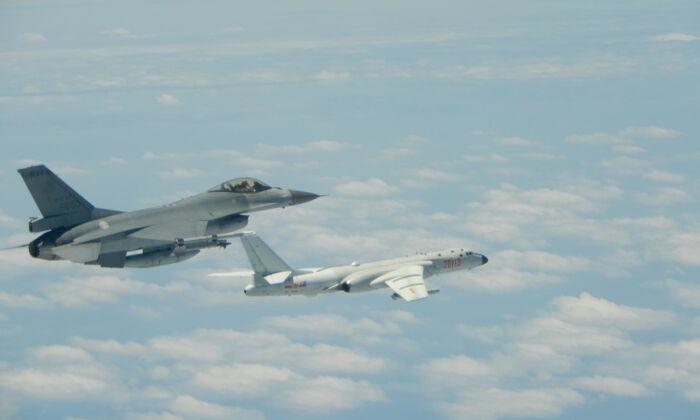Taiwan’s military has publicized an interception of People’s Republic of China (PRC) military aircraft that encroached on the contested East China Sea and Ryukyu Islands area near Taiwan. It marks the first time that Taiwan has released video footage of such interceptions, which have grown more frequent as Beijing continues to escalate its military maneuvers in the region.
The Chinese regime military aircraft that ventured into the western Pacific on the morning of May 11 consisted of multiple H-6K bombers, a Y-8 transport, a Tu-154 surveillance aircraft, Su-35 and J-11 fighter jets, and a KJ-2000 airborne early warning aircraft.
Both Taiwan’s and Japan’s militaries scrambled aircraft in response to the Chinese regime’s incursion. Video footage released by Taiwan clearly shows a Chinese H-6K bomber that is armed with two CJ-10 cruise missiles. Other photos show Taiwan’s F-CK-1 and F-16 fighter jets flying alongside the PRC aircraft.
https://www.facebook.com/MilitarySpokesman/videos/pcb.1820946281302015/1820945731302070/?type=3&theater
One group of the PRC aircraft flew over the Bashi Channel, south of Taiwan, and entered the Miyako Strait, near Okinawa, before flying back to China. The other group flew the northern route in a clockwise direction and entered the Miyako Strait before circling Taiwan and returning to China through the Bashi Channel.
It was the first time that the Su-35 fighters were sent over the Bashi Channel, according to Taiwan’s defense ministry, which also assured the public that Taiwan’s air force is fully capable of monitoring PRC naval and air operations and to “take effective responsive measures to ensure national security.”
Observers say that the high-profile release of photos and video is a public gesture by Taiwan that the democratic island nation is taking a hardened stance toward the Chinese regime’s incursions into Taiwan’s eastern sea area.
In April, PRC Defense Ministry spokesman Wu Qian told a monthly press conference that the frequent air operations surrounding Taiwan were “directed against Taiwan independence forces and activities in the island.”

“The continuous incursions by Chinese People’s Liberation Army aircraft and warships into the area surrounding Taiwan and Japan’s Okinawa is a deliberate provocation by the Chinese regime. It is a prelude to war,” said Michael Tsai, former Taiwan minister of national defense.
Tsai also called for the Taiwanese government to coordinate with Japan and the United States on the future interception of Chinese aircraft and warships, and said that Taiwan must take necessary steps to “deter aggressive behavior posed by China’s People’s Liberation Army.”




